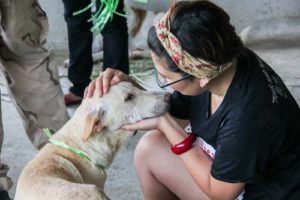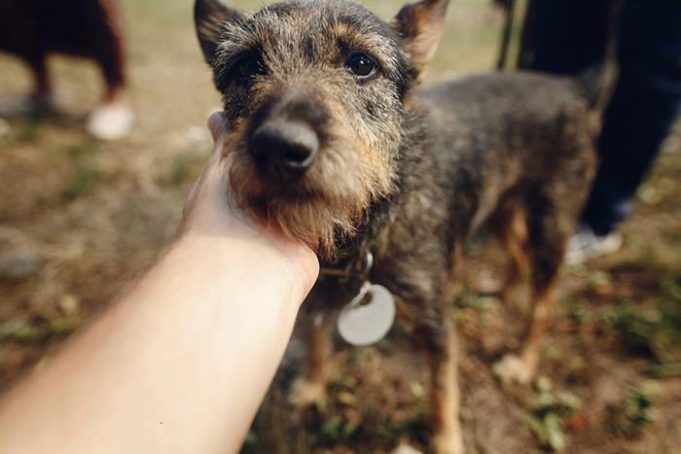Did you know that the number one cause of death among healthy dogs and cats in the U.S. is euthanasia? The sad truth is, these animals are often overlooked because they’re too scared, show fear aggression, have minor health issues, or don’t receive enough exposure to make it out alive.
Since the 1970’s, however, the number of dogs and cats killed in animal shelters has started to drop significantly. Part of the reason for this could be that people are becoming more educated on spaying and neutering, and we're also adopting a lot more pets than before. However, it turns out that social media has made a difference in saving lives too!
Social Media Helps Transporting Efforts
Aside from behavioral and health problems, another difficult hurdle that animal shelters and rescuers run into is that there simply isn’t enough room in their facilities to continuously accept dogs and cats on a daily basis. In the last decade, social media apps and websites like Facebook and Instagram have created a platform that allows animal advocates from one location, to reach out to people in other cities and states.
 During Hurricane Harvey, for example, citizens in the city of Houston, Texas struggled to save their pets. Sadly many dogs, cats, and livestock were left behind to fend for themselves in rising waters. In the wake of this crisis, people and organizations took to Facebook, sharing hundreds of posts from trapped civilians crying out for help, which helped to change the dire situation.
During Hurricane Harvey, for example, citizens in the city of Houston, Texas struggled to save their pets. Sadly many dogs, cats, and livestock were left behind to fend for themselves in rising waters. In the wake of this crisis, people and organizations took to Facebook, sharing hundreds of posts from trapped civilians crying out for help, which helped to change the dire situation.
Organizations like The Cajun Navy and Austin Pets Alive! helped to save hundreds of animals left on chains and stuck in crates to drown. Several groups put their efforts together, gathered funds, and transported animals from Houston to Austin shelters and other rescues across the nation. Distributing the workload for feeding, medical care, and finding a home to less populated facilities saves lives, and makes a huge difference in helping adopted animals get to their new homes.
Texas isn’t the only place you’ll see advocacy work happening; using social media as a main platform, there have been efforts made as far as China to help buy dogs from the Chinese Dog Meat festival and transport them to safety.
Rescue Organizations Gain More Exposure
Platforms like Instagram create an instant reaction from people, even if you aren’t an animal lover. Rescuers are now able to create a sense of urgency with their viewers rather than the casual approach your typical commercial.
Posting a photo with “EMERGENCY, Due to be euthanized at 9A.M.” is far more effective than an SPCA commercial that asks viewers to donate “just five cents a day.” Being able to see the dog that you’re saving, and only being given a limited amount of time to do it, gives people a personal connection and builds trust.
Followers on social media platforms want to and do know that when they donate their hard earned money, it’s going to help pay that dog’s medical bills. Their donation is going to that dog’s well-being, it’s not just an arbitrary organization on television that’s asking for funding. People don’t just want to make a difference, they want to see results. Facebook, Instagram, Twitter, and other sites have allowed this to become a reality.
It Exposes Those With Bad Intentions
Although social media is a phenomenal tool for animal welfare and rescue, it unfortunately has a dark side. Sadly, there are people out there who seek out and adopt dogs for the wrong reasons, and this is why you should never advertise pets as “free to good home.” Websites like Craigslist have become popular for buying and selling animals online. It’s not uncommon for people to purchase or take a dog or cat and use them as bait for underground fighting organizations, and many other unsettling reasons.
If you’ve ever seen the sad results of free adoption events, you’ll understand why they’re extremely frowned upon. You can easily go to Instagram or Facebook and find dogs that were “successfully” adopted, only to be found weeks later abused and in bad physical shape. While it may upsetting to hear and see, it’s absolutely necessary for these stories to circulate. This way, culprits can be found and caught in the hopes that they’ll never be able to own another pet again, at the very least.
Lost Dogs are More Likely Get Home
 Animal shelters receive hundreds of strays every single day, and if they aren’t adopted within a certain amount of time they have to be put down in order to make space. Some of these are dogs and cats with loving families who want them back.
Animal shelters receive hundreds of strays every single day, and if they aren’t adopted within a certain amount of time they have to be put down in order to make space. Some of these are dogs and cats with loving families who want them back.
The problem is, owners can’t be found if there isn’t a chip or tag attached to their pet. Even more so, is that when they do have them, the information is outdated. This means that a good amount of strays being euthanized on a daily basis are actually someone’s pet!
Before we had social media, you had to rely on neighbors, sign posting, and hours of driving across town to look for lost pets. Now the safest, and fastest way to find your lost dog is to make as many postings as possible across Twitter, Facebook, Tumblr, Instagram, and pet finder websites as possible. Pets that have been lost for days, weeks, months, even years have successfully been reunited with their families.
On the other hand, don’t rely too much on internet connections to help you find your fur kid. If you haven’t already, provide your dog with a bright, secure collar and updated tag information. Their name, your name, your address, and your phone, is enough information to at least get ahold of you. Additionally, you can include an extra tag with your dog’s veterinarian number and their vaccinations.
Helping to Educate People
Overall, social media is doing great things for animals worldwide. Most of all, rescues need society to be more aware of the struggles that stray animals face every day. In order for changes to be made, spaying and neutering for dogs and cats is an absolute must. In fact, you could probably go on Facebook right now and find a free spay and neuter event or clinic within seconds!
READ NEXT: 26-Step Checklist for Adopting a New Adult Dog or Puppy














